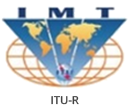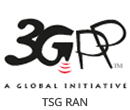A Global Partnership

3GPP is a global project, producing specifications and studies for mobile systems used by over 5 billion subscribers worldwide.
Our technical meetings are one of the industry’s most important meeting places, as decisions are made on new functionality on a rolling timeline. One of the major discussions in 3GPP is not whether a technical feature should be specified, but about when it can be completed. A 3GPP Release comes around every 12-18 months, so getting your solution into an early release can provide a major stimulus to the success of a new technology.
Individual Ministries, Operators, Manufacturers, Associations, and various companies of all shapes and sizes – known more generally as ‘Individual Members’ (IMs) in the project – join together to make technical and scheduling decisions across the project.
You can join the work by becoming an IM of one of the seven standards developing organization (SDO) Partners in 3GPP (ARIB, ATIS, CCSA, ETSI, TSDSI, TTA, TTC).
Why the Name?
3GPP was created in 1998 to develop 3G mobile standards for WCDMA and TD-SCDMA accesses and their core networks. The aim was to maintain and evolve the ETSI standards for the (2G) GSM system. Another aim was to create an international way forward, where the regions could be part of a standards eco-system that would bring a new global scale and an enduring platform for the work.
Raising 3GPP to an international standards project has brought a synergy between the ITU’s calls for generations of International Mobile Telecommunications (IMT) systems and 3GPP’s work.
The cooperation between 3GPP TSG RAN and ITU-R Working Party 5D (WP 5D) has established a solid roadmap for the creation of new radio interface technologies and the evolving regulation and spectrum allocations for their use.
 |  |
IMT-2000 | UMTS (FDD &TDD), HSPA LTE |
IMT-Advanced | LTE |
IMT-2020 | 5G NR & LTE |
The success of the 3GPP partnership model and the convergence of the world’s network operators on the 3GPP system is now encouraging new industries to join the work. The rocketing number of use cases for 5G is creating new requirements and is making a real impact on the 3GPP prioritization process for new studies and normative efforts in the groups.
We keep the name 3GPP as it has become a marker of what we are and where we have come from.
Some Landmark Years
| 2021 | 773 member companies active in 3GPP. |
| 2021 | The complete 3GPP 5G proposal accepted by the ITU-R in ‘Detailed specifications of the radio interfaces of IMT-2020.’ (ITU-R M.[IMT-2020.SPECS]). |
| 2020 | Rel-16 – 3GPP finalizes contribution for IMT-2020, submitting a single Radio Interface Technology (RIT) and combined Sets of 3GPP Radio Interface Technologies (SRIT). |
| 2019 | Rel-15 – first release (Rel-15) of 5G-NR ready for implementation, in non-standalone networks. |
| 2018 | Rel-14 – Improvements of the Mission Critical (MCx) aspects, Vehicle-to-Everything (V2X), improvements for Cellular IoT, eLAA, 4 band & inter-band Carrier Aggregation. |
| 2016 | Rel-13 – LTE in unlicensed spectrum, Mission-critical Push-To-Talk. Creation of the LTE-Advanced Pro brand, to promote progress on features for professional user services. |
| 2015 | Rel-12 – First ‘vertical’ industry joins; mission critical experts look to take-up Device to Device (D2D) and Proximity Services features. Work on WiFi integration. |
| 2015 | 3GPP 5G Workshop held in Phoenix. Over seventy presentations contributed to the discussion, covering the full range of requirements that will feed TSG RAN work items for the next five years. |
| 2013 | Rel-11 Enhanced downlink control channel (E-PDCCH), Work on avoiding overloading networks with Machine-Type Communications (MTC). |
| 2012 | ITU approves IMT-Advanced terrestrial radio interfaces for the 4th Generation of mobile networks: 3GPP LTE Release 10 and Beyond and IEEE WirelessMAN-Advanced (802.16m). |
| 2011 | Rel-10 – LTE-Advanced brings Carrier Aggregation & HetNets; with improvement at cell-edge via enhanced Inter-Cell Interference Coordination (eICIC). |
| 2010 | Rel-9 – VoLTE, eHNB for indoor and EMBS broadcast specifications approved. |
| 2009 | Rel-8 – first LTE Release completed; Evolved UTRAN + Evolved Packet Core (EPC). |
| 2007 | Rel-7 – sets UE Performance Requirements for MBMS. |
| 2003 | Rel-6 included enhancements to the Multimedia Messaging Service (MMS), 3G/WLAN interworking. |
| 2002 | Rel-5 introduces the IP Multimedia Subsystem (IMS) and High Speed Downlink Packet Access (HSDPA). |
| 2001 | Early 3G releases (Rel-99 and Rel-4) see UMTS ready for implementation. Multiple Input Multiple Output antennas (MIMO) work starts |
| 1999 | ITU approved five IMT-2000 terrestrial radio interfaces for the 3rd Generation of mobile networks: WCDMA (3GPP), CDMA2000, TD-SCDMA, EDGE (3GPP), ETSI DECT. |
| 1998 | Creation of the Third Generation Partnership Project (3GPP™ |
| 1989 | GSM committee transferred from CEPT to ETSI. |
| 1988 | First GSM specs ready for implementation. |
| 1987 | GSM Memorandum of Understanding signed |
